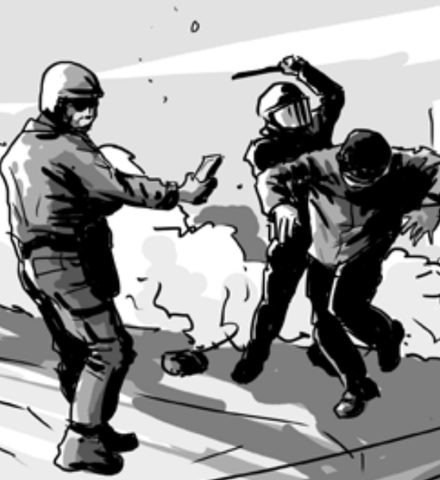Ethical Guidelines
Using Videos in Human Rights Reporting and Advocacy
ABOUT
Does sharing videos by extremist organizations aid their goals of provoking fear and glamorizing violence, or is it a necessary part of reporting? Should eyewitnesses be asked permission before their videos are broadcast by news media, or would that hinder the reporting process? How can investigators and advocates report on abuse caught on camera without violating the privacy or impacting the security of those seen on video?
For newsrooms, crisis responders, and human rights investigators, traditional protocols and guidelines have not kept up with these new ethical challenges. While codes of ethics instruct us to do no harm, there is little by way of guidance to apply that principle when working with videos that we ourselves did not produce—footage filmed by bystanders, activists, victims, survivors, and sometimes perpetrators of abuse.
To help fill this gap, we created WITNESS’s Ethical Guidelines for using Eyewitness Videos in Human Rights Reporting and Advocacy (PDF). It draws upon WITNESS’ resources on filming human rights safely and ethically, our work curating human rights videos on over the years, and conversations with peers in the fields of journalism and human rights who have been facing similar challenges and addressing them in their own ways.
Here’s an overview of what’s included
The guidelines cover the principles of human rights documentation, discuss how those principles can be used to assess the various risks involved in sharing online videos of abuse, and provide ways to minimize those risks. It addresses the following topics:
- Principles of ethical documentation: Considering consent, intended audience, and the safety, dignity, and privacy of individuals and communities filmed
- Professional Judgment: In the absence of clear indicators of informed consent, how to make a professional judgment about whether using footage could violate the consent, privacy, or dignity of those filmed, and weigh the intended social good with the potential risks involved
- How to minimize harm while exposing abuse: Reporting on abuse without sharing the footage or exposing the identity of those who appear in it
- Perpetrator videos: A checklist of questions about the intent of the filmers to assess the risks involved in sharing footage taken by perpetrators
- Credit & Context: The three reasons to reference the video’s source to viewers–a responsibility to content creators, transparency to viewers, and tracking the chain of custody
- At-risk sources: Ways to protect the security or maintain the anonymity of at-risk filmers
- Graphic footage: A list of questions to assess when it is appropriate to share graphic footage
Throughout the guide are examples from around the world illustrating various ethical dilemmas, and ways activists, news outlets, and human rights organizations address them. The guide references insights and tips from other experts, including the Online News Association, the Poynter Institute, the International Committee of the Red Cross, and the Tow Center for Digital Journalism, and includes a checklist of questions to ask before sharing eyewitness footage.

Who is the guide for?
The ethical guidelines were written for investigators, journalists, advocates, filmmakers, and others who use eyewitness videos for reporting or documenting human rights. But the principles are applicable to all of us who watch and share eyewitness footage online, even if that simply means retweeting a video or writing about it on our blog. Just as technology has distributed the tools of filming and broadcasting to anyone with a smartphone and an internet connection, it has also put the responsibility of sharing footage safely and ethically to us all.
This resource is part of WITNESS'
8 Resources for Video Storytelling, a package of materials to help filmers safely and ethically document human rights abuse.
8 Resources
- Filming Protests & Police Abuse
- Mastering Depth of Field With Your DSLR
- How to Preserve Your Videos
- How to Make Videos for Change
- Video as Evidence: Basic Practices for Capturing, Storing and Sharing
- Ethical Guidelines for Using Videos in Human Rights Reporting and Advocacy
- How to Film a Protest
- How to Film with a Mobile Phone




 Download Using Videos in Human Rights Reporting and Advocacy
Download Using Videos in Human Rights Reporting and Advocacy